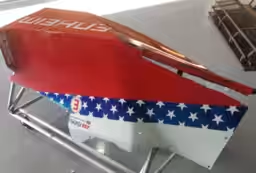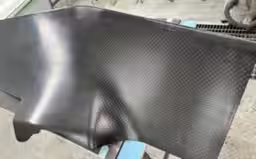

Sustainable Regeneration Technology Developed from Formula E Carbon Fiber Components
Development of Sustainable Regeneration Technology
In a significant breakthrough for sustainability in motorsports, Nagase Industries, Chiyoda Holdings, Fujikako, and UCHIDA have announced the successful development of a regeneration technology that extracts carbon fibers from damaged components of Formula E racing cars. This collaboration leverages advanced techniques to repurpose materials that are crucial to the automotive industry, particularly in lightweight and high-strength applications.
The components in question are primarily made from Carbon Fiber Reinforced Plastics (CFRP), a composite material renowned for its lightweight properties and remarkable strength. Traditionally, however, when CFRP parts are damaged, they present a challenge for repair and disposal, often requiring substantial energy for incineration. Consequently, many of these parts end up in landfills, highlighting a significant sustainability issue in the motorsport sector, where CFRP components are prevalent.
The innovative approach taken by these four companies focused on the extraction of carbon fibers while maintaining their original lengths and shapes. By utilizing patented technology developed by Fujikako, the resin portions of the CFRP parts were carbonized, allowing for the retrieval of the carbon fibers in their original form. UCHIDA contributed its expertise in reinfiltrating resin into the fibers, facilitating their reforming into usable components. This method marks the first successful attempt to regenerate CFRP parts into usable shapes, offering a promising sustainable solution.
Typically, when recycling used CFRP, the material is ground into smaller pieces to create threads or sheets. However, the ability to extract carbon fibers while preserving their structural integrity opens new doors for sustainability in automotive applications, particularly in demanding environments like motorsports.
This initiative coincided with the recent launch of the Formula E series in Japan, thanks to collaborations with the Andretti Formula E racing team. As part of this project, which is aligned with Formula E's commitment to achieving net-zero emissions, the teams are exploring ways to sustainably utilize CFRP components damaged during races. According to Andretti Formula E, this project symbolizes the potential of pioneering innovations that could reshape multiple industries reliant on lightweight and durable materials.
Furthermore, there is a growing urgency to address the sustainability conundrum in the automotive sector, particularly as the industry transitions toward electric vehicles. With racing events like Formula E setting a standard for environmental responsibility, this development in carbon fiber regeneration emerges as a crucial step toward a circular economy within motorsports.
The four companies involved bring substantial expertise to the table:
- - Nagase Industries: Collaborates with Andretti Formula E and focuses on sustainable practices.
- - Chiyoda Holdings: Proposes collaborations to leverage racing components in sustainable projects.
- - Fujikako: Specializes in the extraction of carbon fibers while maintaining their shape.
- - UCHIDA: Known for their ability to re-infiltrate resin into extracted carbon fibers.
Together, they represent a hopeful future for the utilization of materials in motorsports, reducing waste and setting new standards for sustainability.
In summary, this collaborative effort not only sets a milestone for the Formula E racing community but also paves the way for broader applications of sustainable practices in the automotive industry. The ongoing research will help enhance the strength and applicability of the regenerated components, forging a path toward more ecologically responsible racing and manufacturing practices.






Topics Consumer Products & Retail)










【About Using Articles】
You can freely use the title and article content by linking to the page where the article is posted.
※ Images cannot be used.
【About Links】
Links are free to use.